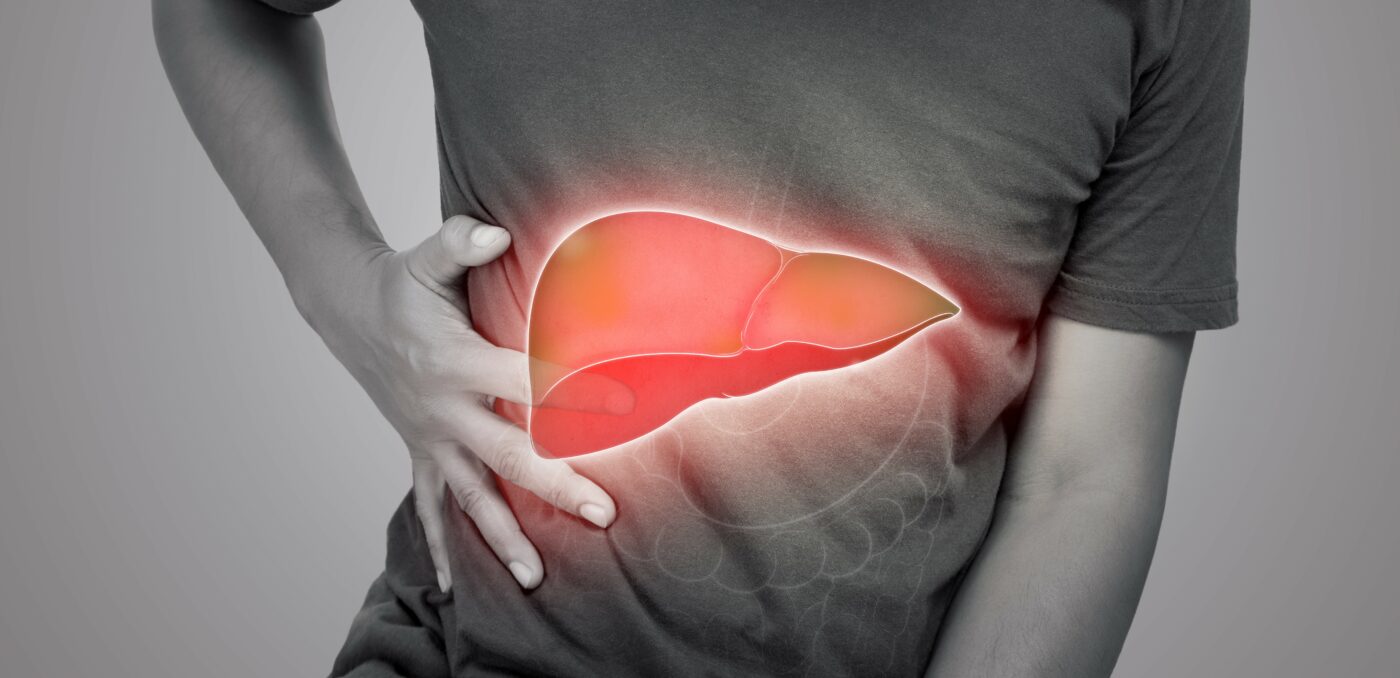本翻譯僅作學術交流用,無商業意圖,請勿轉載,如有疑議問請來信
最新研究發現,在北印度人群中,非酒精性脂肪肝病(NAFLD)與高敏C反應蛋白(hs-CRP)有著顯著關聯。研究涉及100名受試者,通過超聲波診斷確認患有NAFLD。結果顯示,hs-CRP水平在NAFLD患者中顯著升高,可能成為評估疾病嚴重性的替代標記。
高敏C反應蛋白(hs-CRP)與亞洲印度人非酒精性脂肪肝病(NAFLD)的關聯
Association of high-sensitivity C-reactive protein (hs-CRP) with non-alcoholic fatty liver disease (NAFLD) in Asian Indians: A cross-sectional study
Affiliations expand
PMID: 32110624 PMCID: PMC7014887 DOI: 10.4103/jfmpc.jfmpc_887_19
Free PMC article
https://pubmed.ncbi.nlm.nih.gov/32110624/
摘要
背景:非酒精性脂肪肝病(NAFLD)是全球慢性肝病發展的重要病因。其病理生理學包括慢性低度炎症。關於炎症標記與NAFLD的關聯的研究很有限。因此,我們在當前的研究中,旨在研究這種炎症標記hs-CRP與北印度人口中NAFLD的關聯。
材料與方法:對於這項橫斷面研究,我們包括了100名年齡在18歲以上、經超聲波檢查診斷為NAFLD的男女患者,以及年齡、性別和BMI匹配的滿足納入和排除標準的受試者。我們記錄了人體測量資料、高敏感度C-反應蛋白(hs-CRP)、糖化血紅蛋白(HbA1c)以及肝功能測試的結果。
結果:基線變量在年齡、體重、BMI、腰臀圍比例和血壓上進行了匹配。糖化血紅蛋白(P < 0.001)、丙氨酸轉氨酶(P = 0.002)、鹼性磷酸酶(P = 0.002)和hs-CRP(P < 0.001)在有NAFLD的受試者中增高。NAFLD受試者的平均hs-CRP水平顯著高於對照組(3.12 ± 1.42 mg/L vs 1.05 ± 0.44 mg/L,P < 0.001)。1級組的平均hs-CRP水平為1.42 ± 0.55 mg/L,2級組為0.98 ± 0.72 mg/L(與1級組相比,P < 0.001),3級組為4.5 ± 1.11 mg/L(與1級組相比,P < 0.001)。對照組的hs-CRP比較值為1.05 ± 0.44 mg/L。在單變量分析中,腰臀圍比例(P = 0.035)、糖化血紅蛋白(P < 0.001)和hs-CRP(P < 0.001)顯示與NAFLD有顯著關聯。在羅吉斯迴歸分析中,即使在調整腰臀圍比例和糖化血紅蛋白後,hs-CRP與NAFLD的關聯仍顯著(勝算比1.311,95%置信區間1.146-1.488,P < 0.001)。
結論:在這個北印度人口的隊列中,hs-CRP與NAFLD顯示出獨立的關係。因此,hs-CRP可以作為NAFLD疾病嚴重性的替代標記。
關鍵詞:hs-CRP;炎症;非酒精性脂肪肝病。
版權:© 2020 家庭醫學與基礎護理期刊。
Abstract
Background: Non-alcoholic fatty liver disease (NAFLD) is an important etiology for the development of chronic liver disease worldwide. Its pathophysiology includes chronic low-grade inflammation. There are limited studies on the association of inflammatory markers with NAFLD. Hence, in the present research, we aimed to study the association of one such inflammatory marker hs-CRP with NAFLD in north Indian population.
Materials and methods: For this cross-sectional study, 100 subjects of either sex above 18 years of age, being diagnosed as a case of NAFLD on the basis of ultrasonography and age, sex and BMI matched subjects fulfilling the inclusion and exclusion criteria were included. Anthropometric profile, high-sensitivity C-reactive protein (hs-CRP), HbA1c, and hepatic function tests were recorded.
Results: The baseline variables were matched for age, weight, BMI, waist-hip circumference ratio, and blood pressure. The HbA1c (P < 0.001), alanine aminotransferase (P = 0.002), alkaline phosphatase (0.002), and hs-CRP (P < 0.001) were elevated in subjects with NAFLD. The mean level of hs-CRP was significantly higher in subjects with NAFLD as compared to the control group (3.12 ± 1.42 mg/L vs 1.05 ± 0.44 mg/L, P < 0.001). The mean hs-CRP level was 1.42 ± 0.55 mg/L in grade 1, 0.98 ± 0.72 mg/L in grade 2 with P < 0.001, and 4.5 ± 1.11 mg/L in grade 3 with P < 0.001 when compared to grade 1.The comparative value of hs-CRP in the control group was found to be 1.05 ± 0.44 mg/L. On univariate analysis waist-hip circumference ratio (P = 0.035), HbA1c (P < 0.001), and hs-CRP (P < 0.001), showed a significant association with NAFLD. On logistic regression hs-CRP was found to have significant association with NAFLD even after adjusting waist-hip circumference ratio and HbA1C (odds ratio 1.311, 95% confidence interval 1.146-1.488, P < 0.001).
Conclusion: In this cohort of north Indian population, hs-CRP showed independent relationships with NAFLD. Thus, hs-CRP may be used as a surrogate marker for the disease severity in NAFLD.
Keywords: hs-CRP; inflammation; non-alcoholic fatty liver disease.
Copyright: © 2020 Journal of Family Medicine and Primary Care.
利益衝突聲明
不存在任何利益衝突。
圖1高敏感性C反應蛋白(hs-CRP)的平均水平與非酒精性脂肪肝病(NAFLD)嚴重性的關係
參考資料
Sherlock S, Dooley J. Diseases of the Liver and Biliary System. Oxford: Blackwell Science; 2002.
Angulo P. Nonalcoholic fatty liver disease. N Engl J Med. 2002;346:1221–31. – PubMed
El-Serag HB, Tran T, Everhart JE. Diabetes increases the risk of chronic liver disease and hepatocellular carcinoma. Gastroenterology. 2004;126:460–8. – PubMed
Rodriguez-Hernandez H, Simental-Mendia LE, Rodriguez-Ramirez G, Reyes-Romero MA. Obesity and inflammation: Epidemiology, risk factors, and markers of inflammation. Int J Endocrinol. 2013;2013:678159. – PMC – PubMed
Musso G, Gambino R, Cassader M, Pagano G. Meta-analysis: Natural history of non-alcoholic fatty liver disease (NAFLD) and diagnostic accuracy of non-invasive tests for liver disease severity. Ann Med. 2011;43:617–49. – PubMed
Wong VW. Nonalcoholic fatty liver disease in Asia: A story of growth. J Gastroenterol Hepatol. 2013;28:18–23. – PubMed
Yamamoto K, Takada Y, Fujimoto Y, Haga H, Oike F, Kobayashi N, et al.
Nonalcoholic steatohepatitis in donors for living donor liver transplantation. Transplantation. 2007;15(83):257–62. – PubMed
Williams CD, Stengel J, Asike MI, Torres DM, Shaw J, Contreras M, et al. Prevalence of nonalcoholic fatty liver disease and nonalcoholic steatohepatitis among a largely middle-aged population utilizing ultrasound and liver biopsy: A prospective study. Gastroenterology. 2011;140:124–31. – PubMed
Clark JM. The epidemiology of nonalcoholic fatty liver disease in adults. J Clin Gastroenterol. 2006;40(Suppl 1):S5–10. – PubMed
Falck-Ytter Y, Younossi ZM, Marchesini G, McCullough AJ. Clinical features and natural history of nonalcoholic steatosis syndromes. Semin Liver Dis. 2001;21:17–26. – PubMed
Adams LA, Lymp JF, St Sauver J, Sanderson SO, Lindor KD, Feldstein A, et al. The natural history of nonalcoholic fatty liver disease: A population-based cohort study. Gastroenterology. 2005;129:113–21. – PubMed
Marchesini G, Brizi M, Bianchi G, Tomassetti S, Bugianesi E, Lenzi M, et al. Nonalcoholic fatty liver disease: A feature of the metabolic syndrome. Diabetes. 2001;50:1844–50. – PubMed
Wieckowska A, Papouchado BG, Li Z, Lopez R, Zein NN, Feldstein AE. Increased hepatic and circulating interleukin-6 levels in human nonalcoholic steatohepatitis. Am J Gastroenterol. 2008;103:1372–9. – PubMed
Argo CK, Northup PG, Al-Osaimi AM, Caldwell SH. Systematic review of risk factors for fibrosis progression in non-alcoholic steatohepatitis. J Hepatol. 2009;51:371–9. – PubMed
Chiang CH, Huang CC, Chan WL, Chen JW, Leu HB. The severity of non-alcoholic fatty liver disease correlates with high sensitivity C-reactive protein value and is independently associated with increased cardiovascular risk in healthy population. Clin Biochem. 2010;43:1399–404. – PubMed
Kuppan G, Anjana RM, Deepa M, Paramasivam P, Chandrakumar S, Kaliyaperumal V, et al. Inflammatory markers in relation to nonalcoholic fatty liver disease in urban South Indians. Diabetes Technol Ther. 2012;14:152–8. – PubMed
Ndumele CE, Nasir K, Conceicao RD, Carvalho JA, Blumenthal RS, Santos RD. Hepatic steatosis, obesity, and the metabolic syndrome are independently and additively associated with increased systemic inflammation. Arterioscler Thromb Vasc Biol. 2011;31:1927–32. – PMC – PubMed
Saadati S, Sadeghi A, Mansour A, Yari Z, Poustchi H, Hedayati M, et al. Curcumin and inflammation in non-alcoholic fatty liver disease: A randomized, placebo controlled clinical trial. BMC Gastroenterol. 2019;19:133. – PMC – PubMed
Wang B, Li F, Guo J, Wang C, Xu D, Li C. Effects of liver function, insulin resistance and inflammatory factors on vascular endothelial dilation function and prognosis of coronary heart disease patients complicated with NAFLD. Exp Ther Med. 2019;17:1306–11. – PMC – PubMed
Yeniova AO, Küçükazman M, Ata N, Dal K, Kefeli A, Başyiǧit S, et al. High-sensitivity C-reactive protein is a strong predictor of non-alcoholic fatty liver disease. Hepatogastroenterology. 2014;61:422–5. – PubMed
Nigam P, Bhatt SP, Misra A, Vaidya M, Dasgupta J, Chadha DS. Non-alcoholic fatty liver disease is closely associated with sub-clinical inflammation: A case-control study on Asian Indians in North India. PLoS One. 2013;8:e49286. – PMC – PubMed
Lee J, Yoon K, Ryu S, Chang Y, Kim HR. High-normal levels of hs-CRP predict the development of non-alcoholic fatty liver in healthy men. PLoS One. 2017;12:e0172666. – PMC – PubMed



 English
English Bahasa Melayu
Bahasa Melayu Bahasa Indonesia
Bahasa Indonesia Tiếng Việt
Tiếng Việt ไทย
ไทย